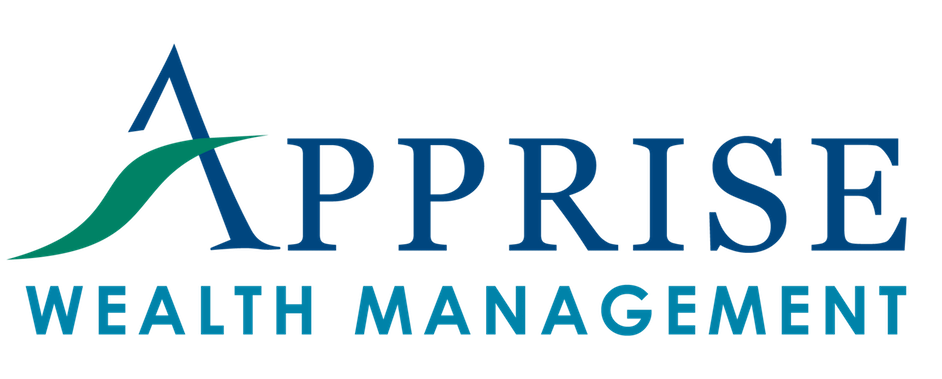When saving for retirement, we often prioritize tax-deferred accounts. But we should save for retirement in other types of accounts, too. After reading this week’s blog, you should better understand why it makes sense to include taxable savings in your retirement accounts.
If your employer offers a match, it’s hard to argue against funding your 401(k) enough to earn the match before considering anything else. Think of it this way. A common employer benefit provides you with a 3% match if you contribute 6% of your salary to your 401(k). Assume that you earn an $80,000 annual salary. If you save $4,800 in your 401(k), that leads to another $2,400 in matching funds. That’s equivalent to an immediate 50% return on your investment. I don’t know how you can duplicate that.
Plus, when your employer decided how much to pay you, they expected you to earn the match. That means they consider the match as part of your pay. If you don’t accept the match, you are foregoing part of your compensation.
Different Tax Buckets for Retirement Accounts
Your retirement savings can fall into four different tax buckets or categories:
- Pre-tax: For example, individual retirement accounts (IRAs), 401(k)’s/403(b)’s.
- Tax-free: For example, Roth IRAs, Roth 401(k)’s.
- Triple Tax-Free: For example, Health Savings Accounts (HSAs).
- Taxable: For example, taxable brokerage.
When you save in a pre-tax account, you get a current tax deduction. But you must pay ordinary income tax in the future as you withdraw money from the account.
When you save in a tax-free account, you deposit after-tax amounts into the account, but you can generally make tax-free withdrawals (including any earnings) in the future.
With HSAs, you get the best of all worlds. You get a current tax deduction for your contributions. As long as you have qualified medical expenses at some point after opening the account, you can also make tax-free withdrawals (including earnings).
We often overlook the benefits associated with having taxable savings in retirement. In the rest of this blog, I’ll review some of the major benefits associated with holding taxable retirement savings as part of your retirement assets.
TAXABLE RETIREMENT SAVINGS – GENERAL CONSIDERATIONS
-
You want to access your long-term investments.
Remember that when you withdraw money from your tax-deferred accounts you may pay a penalty as well as regular income taxes. A taxable brokerage account provides you with the flexibility to add or take money out of the account with few limits, penalties, or restrictions. You don’t have to worry about required distribution in the future either. You can save money in this account towards retirement or any other goal. Plus you currently pay a lower tax rate on long-term capital gains and qualified dividends.
-
You don’t have access to a 401(k) plan at work.
Unfortunately, not all employers offer a retirement plan. Others may require a waiting period before you can participate (e.g., 90 days or one year). Some may only allow full-time employees to contribute.
If you fall into this category, you can open an IRA, but you can only contribute $6,000 in 2022 ($7,000 if age 50 or older). If you want to save at least 10-15% of your earnings for retirement, the limit may be too low. Making additional contributions to a taxable account can help you meet your savings target.
-
401(k) plan quality.
How good is your 401(k) plan? Does it have high administrative costs and less-than-desirable or expensive investment options? Or are the fund choices in some categories not as good as those in others, meaning that you can’t comfortably diversify your portfolio?
-
You maxed out your workplace account and want to save more.
In 2022, you can make a maximum contribution to your 401(k) of $20,500 ($27,000 if age 50 or older). If a married couple in their 40s with combined earnings of $300,000 wants to save more aggressively for retirement, they can save $41,000 combined in their 401(k)’s. Their income exceeds the level that would allow them to make a deductible contribution to an IRA or a Roth IRA. Once again, contributing to a taxable account can allow them to increase their retirement savings.
-
You can only contribute to a nondeductible IRA.
Some people like contributing to nondeductible IRAs. But it may not be worth it. You don’t get a tax deduction for your contributions. Although you still get tax-free earnings while the funds remain in the IRA, you pay ordinary income tax when you withdraw them. On the other hand, you pay taxes at the lower capital gains tax rate if you hold the funds in a taxable account.
TAXABLE SAVINGS IN RETIREMENT – SPECIFIC BENEFITS
-
Opportunity to lower Modified Adjusted Gross Income (MAGI).
In addition to the base premium amount, there is a means-based element to Medicare. Premiums are based on the amounts reported on your tax return from two years earlier. If your MAGI exceeds $91,000 (single filers) or $182,000 (married filers), you are subject to an Income Related Monthly Adjustment Amount (IRMAA) for your Part B and Part D premiums. (Also discussed in this blog.) Having taxable savings in retirement can make it easier to manage your MAGI in conjunction with IRMAA. This could help you save considerable amounts of money in Medicare premiums during your lifetime.
-
Ability to pay taxes on Roth conversions more easily.
I have discussed some of the benefits of Roth conversions on multiple occasions (for example, see here, here, and here). While you can pay the taxes due on a Roth conversion directly from the IRA you’re converting from, you receive a greater overall benefit if you pay the taxes from your taxable retirement savings accounts. This can include brokerage and/or savings accounts.
-
Potential tax savings for your heirs.
There are a few important considerations in this category. Under current rules, if you pass an IRA or a Roth IRA to your heirs, they only have 10 years to deplete the account. If the assets were held within an account like a rollover IRA, the distributions should be 100% taxable. Depending on your heirs’ earnings, that could result in a significant tax bill. If the assets are held within a Roth IRA, the 10-year rule still applies, but taxes shouldn’t be due on any distributions.
If you pass on a taxable brokerage account, it can provide significant tax benefits. First, there are no distribution requirements, and the money can stay in the account for an undetermined time. More importantly, under the current estate tax rules, your heir receives a “stepped-up basis” in the transferred assets. That can meaningfully reduce the cost of selling those assets in the future.
For example, say you bought 100 shares of company XYZ many 25 years ago for $10 per share. With commissions, assume your total purchase price was $10,100. After a few stock splits, assume you now own 800 shares that trade for $100 per share on the date of your death. That makes them worth $80,000, a gain of almost $70,000. Assuming a 20% capital gains rate the tax bill would be nearly $14,000. Since the basis gets stepped up to the fair market value of the shares at the date of your death, your heirs won’t owe that $14,000.
-
Easier to fund an early retirement.
If you have taxable savings in retirement accounts, you don’t have to worry about the rules limiting withdrawals from pre-tax or Roth accounts. In other words, you can retire before age 59.5 – or even before age 55 – without having to tap your retirement accounts. That means you won’t have to pay a 10% early withdrawal penalty.
-
More time for your assets in your Roth accounts to grow tax-free.
Roth conversions and Roth assets can provide you with many of the same advantages associated with taxable accounts discussed above. But if you have taxable accounts, too, you have more flexibility. You can withdraw funds from your taxable savings in retirement accounts instead of your Roth accounts. Unless you’re Peter Thiel, it’s not easy to build large balances in your Roth accounts. As mentioned above, Roth conversions help, but they come at a cost, too. If you have taxable assets, it can let the assets in your Roth accounts stay there for longer. That provides the potential for more long-term tax-free growth.
Tax Diversification – An Important Benefit
Asset allocation isn’t the only type of diversification that applies to your investments. You can also diversify by account type. Having accounts with taxable savings in retirement can help.
You likely don’t know what tax bracket you will be in when you retire. You may have an idea, but tax rates, rules, and brackets can change. As a result, it can help to have assets spread across multiple account types. That can make it easier to develop a sustainable withdrawal strategy that also considers taxes.
Remember that retirement can last for several decades. You should do what you can to help keep taxes from having too big an impact on your nest egg. Diversification of account types can help minimize the amount of taxes you pay over your lifetime and help make your funds last longer. Using a combination of pretax, Roth, HSAs, and taxable investment accounts can lead to added flexibility when you need to withdraw your funds.
Closing Thoughts
I hope you find these suggestions related to the advantages of having taxable savings in retirement valuable. If you have questions about any of them or would like some help, please schedule a free call. I’ll gladly answer any questions and assist in whatever way I can.
I’ll be back next week with “Apprise’s Five Favorite Reads of the Week.”
Our practice continues to benefit from referrals from our clients and friends. Thank you for your trust and confidence.
We hope you find the above post valuable. If you would like to talk to us about financial topics including your investments, creating a financial plan, saving for college, or saving for retirement, please complete our contact form. We will be in touch. You can also schedule a call or a virtual meeting via Zoom.
Follow us: Twitter Facebook LinkedIn
Please note. We post information about articles we think can help you make better money-related decisions on LinkedIn, Facebook, and Twitter.
For firm disclosures, see here: https://apprisewealth.com/disclosures/





